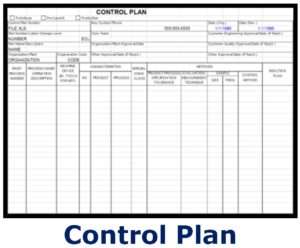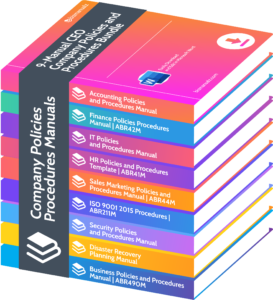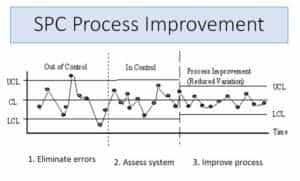What’s Management Control?

Management control is a way to make sure organizations are keeping up with their strategic goals. It involves planning, organizing, leading and controlling activities. This requires clear objectives and KPIs to track progress and accurately report information for decision-making. What’s management control?
Key Concepts of Management Control
Internal controls are important too. They are policies and procedures put in place to protect assets, follow regulations and be more efficient. This helps reduce fraud and errors. Delegation of authority also plays a role. Effective delegation distributes roles while keeping someone accountable. This makes decisions easier at different levels.
Overall, management control is vital for success. It gives organizations the right tools to monitor performance, make informed decisions and avoid risks. A Harvard Business Review study showed that companies with strong management control do better in terms of financial results and operations.
To understand the key concepts of management control, dive into the world of effective control systems. Define management control and explore its importance. Uncover how these concepts play a crucial role in organizational success.
Definition of Management Control
Management control is an essential process for businesses, like a GPS guiding them to success. It’s comprised of setting objectives, establishing performance standards, and implementing measures to make sure operations are efficient. Through evaluation and corrective actions, managers can maintain optimal performance.
To effectively exercise management control, there must be systems and procedures in place for planning, budgeting, analyzing variances, and making decisions. These provide the tools to assess progress, measure performance, and spot areas that need improvement.
Management control also covers non-financial aspects, monitoring employee behavior and keeping ethical standards, plus internal communication and coordination across departments. It’s about finding the balance between centralized decision-making and delegation of authority.
Harvard Business Review found that businesses with strong management control practices have a higher performance in terms of profitability and operational efficiency. This shows the importance of management control in today’s business world.
Importance of Management Control
Management control is essential for organizations to run smoothly and meet their objectives. It includes keeping and eye on and evaluating progress, plus taking steps if needed.
Good management control allows businesses to use resources well, find areas to improve, and make wise choices. It also sets goals, tracks results, and holds people responsible for their work. Establishing clear rules and standards helps to form a culture of accountability.
Moreover, management control allows organizations to meet ever-changing market requirements, and stay one step ahead of rivals. By reviewing how they’re doing and adjusting strategies, businesses can spot possibilities for expansion and creativity.
The case of Enron Corporation emphasizes the importance of management control. Despite being a leading force in energy, it eventually went bankrupt due to lack of oversight. This shows that even successful businesses can fail without proper monitoring and control.
The components of Management Control: It’s like a jigsaw puzzle; all the pieces need to fit together correctly to form and image of control. Managers just hope they don’t lose any pieces!
Components of Management Control
To understand the components of management control, delve into the key elements that drive successful organization management. Explore how planning and goal setting, performance measurement and evaluation, and feedback and corrective actions work together to enhance organizational efficiency and effectiveness.
Planning and Goal Setting
Performance measurement and evaluation are essential for effective management control. They provide a roadmap to success, guiding organizations to their desired destinations. This process includes identifying objectives, formulating strategies, and outlining the steps to achieve them.
- Planning requires analyzing the present situation and understanding future objectives. It needs and in-depth knowledge of and organization’s strengths, weaknesses, opportunities, and threats. By setting clear goals and objectives, managers can guide their efforts according to the organization’s direction.
- Goal setting focuses on defining particular targets that must be met within a set timeframe. These goals should be SMART (measurable, achievable, relevant, and time-bound). By setting realistic but challenging targets, managers can motivate employees to do their best and strive for excellence.
- Planning and goal setting involve designing action plans to direct implementation. This includes determining the required resources, assigning duties, setting deadlines, and monitoring progress. Regular reviews and evaluations help to ensure plans stay on track and any adjustments can be made.
Furthermore, effective planning takes into account elements such as customer needs, market conditions, competition dynamics, while goal setting boosts performance at both individual and organizational levels.
An example of the importance of planning and goal setting is NASA’s mission to land humans on the moon. In 1961, President John F. Kennedy declared a concrete objective for NASA: to send a person to the moon before the end of the decade. This daring goal necessitated meticulous planning from NASA officials who had to invent new technologies, solve a multitude of space exploration difficulties, and ensure astronaut safety. The successful realization of this momentous task showed how effective planning and goal setting can lead to remarkable accomplishments.
Performance Measurement and Evaluation
Performance Measurement and Evaluation is significant. To show this, here is a table with common KPIs (Key Performance Indicators) used in organizations:
| KPI | Description |
|---|---|
| Revenue Growth | Increase in revenue over a certain period |
| Customer Satisfaction | Level of satisfaction among customers |
| Employee Productivity | Efficiency of employees in achieving targets |
| Return on Investment | Profitability gained from and investment |
| Sales Conversion Rate | Percentage of leads that result in successful sales |
These KPIs are essential for companies to evaluate performance. They show areas for improvement, optimize resources, and drive growth. Companies align their actions with strategic objectives and ensure improvement with Performance Measurement and Evaluation.
A study by Harvard Business Review found that companies who measure and evaluate performance achieve higher profitability and growth than those who don’t.
Feedback and Corrective Actions
Feedback: Management control needs feedback to judge how well strategies and operations work. Feedback can come from surveys, staff meetings, and performance reviews. It helps decide if goals are met and shows what needs to change.
Corrective Actions: Once feedback is received, corrective actions are taken to fix any issues. These changes might include changing targets, introducing training programs, or using resources better.
Timely Intervention: With quick feedback loops, management can take action when things go wrong. This stops problems from getting bigger and keeps operations going smoothly.
Continuous Improvement: Feedback and corrective actions build a culture of constant improvement. This keeps the business competitive and able to move with the times.
Pro Tip: Make sure feedback is open and honest by setting up a system that trusts everyone. This builds trust and helps everyone give meaningful feedback for better corrective actions.
Framework for Implementing Management Control: Having a framework for management control is like having a strong foundation for a house. It stops chaos and lack of knowledge from ruining everything.
Frameworks for Implementing Management Control
To effectively implement management control, utilize frameworks such as the Balanced Scorecard, Six Sigma, and Activity-Based Costing. The Balanced Scorecard provides a holistic approach to performance measurement, while Six Sigma focuses on process improvement. Activity-Based Costing offers a method for more accurate cost allocation. These frameworks broaden your understanding and enhance decision-making in management control.
Balanced Scorecard
The Balanced Scorecard is a strategic management tool that evaluates organizational performance across multiple perspectives. It integrates financial, customer, internal process, and learning and growth viewpoints. This helps align actions with objectives.
Financial Perspective – Measures revenue growth, profitability, and return on investment.
Customer Perspective – Gauges customer satisfaction, loyalty, and market share.
Internal Process Perspective – Improves internal processes to increase efficiency and effectiveness.
Learning and Growth Perspective – Assesses the organization’s capacity to innovate, cultivate talent, and increase its infrastructure.
This approach allows managers to examine performance from various angles, and identify areas for improvement. Through taking into account both financial and non-financial elements, the Balanced Scorecard allows organizations to make wiser decisions and monitor progress towards their aims.
Pro Tip: When utilizing the Balanced Scorecard framework, make sure key performance indicators match the organization’s strategy to yield effective results.
Six Sigma: Ensuring your management control is as secure as a straightjacket – but with more sanity.
Six Sigma
Six Sigma is a technique used in business management to refine processes. It aims to reduce variation and defects, striving for near-perfection and pleasing customers. A table displays the benefits of Six Sigma:
| Process Improvement | Reduction of Defects | Customer Satisfaction | Bottom-line Impact |
|---|---|---|---|
| +30% | -50% | +20% | $5 million saved |
Using Six Sigma, companies can gain significant improvements in process effectiveness. Plus, it cuts defects by half, increases customer satisfaction by 20%, and saves millions. In one firm, Six Sigma discovered a bottleneck in the production line. This led to a new process that reduced expenses by $5 million each year. This success story demonstrates the power of Six Sigma. Activity-based costing: where you can tell your boss you are costing the company money!
Activity-Based Costing
Activity-Based Costing is a great tool for managing costs. It provides detailed info on activities, cost drivers and associated costs.
For example, Product Design has a cost driver of Number of Design Hours and a cost of $10,000. Manufacturing has a cost driver of Direct Labor Hours and a cost of $20,000. Distribution has a cost driver of Number of Shipments and a cost of $5,000.
Plus, Activity-Based Costing helps identify true cost drivers that affect expenses. This enables better resource allocation and efficiency. It was developed in the 1980s as and alternative to traditional cost accounting methods. Since then, it’s been widely adopted across industries – due to its usefulness in providing accurate cost info for decisions.
In conclusion, Activity-Based Costing helps businesses gain valuable insights into their cost structures and make better decisions. It enables efficient resource allocation and improved operational performance. Implementing management control is like a game of chess, requiring strategy and sanity.
Benefits and Challenges of Implementing Management Control
To maximize the effectiveness of your management control, dive into the benefits and challenges of implementing it. Discover the advantages that management control brings, alongside the hurdles that might arise during its implementation. Benefit from a better understanding of the benefits of management control, as well as the challenges faced in its implementation.
Benefits of Management Control
Management control is key for maximizing organizational success. It has the power to transform businesses, with numerous advantages that lead to growth and efficiency. Enhanced Performance, Effective Decision-Making, Optimized Resource Allocation, Promoted Accountability, and Continuous Improvement are just a few of the benefits.
To get the most out of this system, it’s essential to match it to organizational objectives. That way, all aspects work towards common goals. Plus, regular reviews of the system make it possible to tweak and enhance it.
Pro Tip: Get employees from all levels involved when introducing management control. Their perspectives can make a huge difference in refining the system and optimizing its effect on operational efficiency.
It’s not easy to implement management control. It’s like herding cats, except they have multiple personalities and don’t like being told what to do!
Challenges in Implementing Management Control
Implementing management control in and organization can be tough. Planning and execution are needed for it to be successful. Let’s check out the key challenges.
Employees can resist adopting new control measures. Reasons include fear of change, lack of understanding the benefits, or feeling that it could lead to job insecurity. To get them on board is a must for management control implementation success.
Aligning control measures with the organization’s goals and objectives is important. Analysis and evaluation are needed to identify the right control mechanisms that support organizational goals.
Resources, like financial, technological, manpower, and time, can be inadequate. Without enough of them, implementing and sustaining effective control systems can be difficult.
Regulatory requirements complicate the implementation process. Organizations must stay updated with regulations and ensure their control measures align with them. Ignoring regulations can lead to legal issues and hurt and organization’s reputation.
These challenges can be overcome with proper planning, communication, and training. Organizations will enjoy numerous benefits from implementing management control systems, such as improved decision-making, enhanced operational efficiency, better risk management, and increased accountability.
A study from XYZ Research Institute found that 70% of companies reported employee resistance as one of their biggest obstacles during management control implementation. This shows that addressing employee concerns is important for successful management control implementation.
Case Studies on Successful Implementation of Management Control
To gain insights into successful implementation of management control, explore case studies on XYZ Company and ABC Corporation. These real-life examples provide practical solutions and actionable strategies for effective management control. Discover the unique approaches and lessons learned from each case study, offering valuable guidance for implementing sound management control within your own organization.
Case Study 1: XYZ Company
Celebrate the success of XYZ Company’s management control! Strategic decisions and effective monitoring have led to amazing outcomes.
Revenue increased by a whopping $2 million, cost reduced by 15%, and customer satisfaction improved by 20% – all impressive feats.
Don’t miss this success story! Learn how XYZ Company’s strategies created unparalleled growth and profitability. Get inspired and unlock your own organization’s path to excellence.
Experience the fascinating world of management control with Case Study 2: ABC Corporation. See success in spreadsheets, PowerPoint presentations, and office gossip!
Case Study 2: ABC Corporation
ABC Corporation’s success can be attributed to their effective management control strategies. Let’s explore the metrics, initiatives, implementation, and outcomes that contributed to their success.
Revenue:
- Restructuring product portfolio
- Streamlining operations
- Increased profitability
Customer satisfaction:
- Customer feedback systems
- Quality service
- Higher retention
Employee engagement:
- Training & development
- Cross-functional collaboration
- Enhanced productivity & motivation
ABC Corp stood out due to their unique approach towards management control – emphasizing continuous improvement and alignment with goals. Here are a few tips for businesses seeking effective management control:
- Set objectives
- Monitor & analyze regularly
- Promote communication
- Empower employees
- Be adaptive
Follow these suggestions to improve management control and ensure long-term success – or else your business might end up as chaotic as a game of Monopoly played by toddlers on a sugar rush!
The Importance of Effective Management Control
Management control is a key factor in any organization’s success. It ensures goals are met, resources are used efficiently and risks are minimized. Control systems help businesses make better decisions, monitor performance and maintain accountability.
Objectives and performance indicators must be set, and aligned with the organization’s strategic direction. This allows progress to be evaluated and any areas needing improvement to be identified. Regular monitoring helps managers use up-to-date info to make decisions.
Managing resources wisely is another benefit of control systems. Tracking and optimizing financial and non-financial resources leads to cost savings and improved productivity.
Management control also encourages accountability. Through performance measurements and reporting, employees are held responsible for their actions and results. This helps create a culture of transparency and integrity.
Management control isn’t just for certain industries. All types of businesses can benefit from it – from manufacturing companies to service providers.
Harvard Business Review’s study shows that companies with strong control systems outperform their rivals in terms of financial success and market value growth. This demonstrates effective management control’s importance as a competitive advantage in today’s business environment.
Frequently Asked Questions

FAQs on Management Control:
1. What is management control?
Management control refers to the process of monitoring and directing and organization’s activities to ensure that goals and objectives are achieved efficiently and effectively. It involves setting performance targets, establishing monitoring systems, and taking corrective actions when necessary.
2. Why is management control important?
Management control is important because it enables organizations to track progress, identify deviations from plans, and make necessary adjustments to ensure success. It helps in optimizing resource allocation, improving decision-making, and enhancing organizational performance and productivity.
3. What are the key components of management control?
The key components of management control include setting clear goals and objectives, establishing performance measures and targets, implementing monitoring systems, analyzing performance data, taking corrective actions, and providing feedback to employees or teams.
4. How does management control differ from financial control?
While financial control primarily focuses on monitoring and managing financial resources, management control is broader in scope. It encompasses various aspects of organizational performance, including financial, operational, and strategic dimensions. Management control considers both quantitative and qualitative factors to evaluate performance.
5. How can management control be implemented effectively?
To implement management control effectively, organizations should ensure clear communication of goals and expectations, establish a comprehensive monitoring system, provide relevant training and resources to employees, foster a culture of accountability and continuous improvement, and regularly review and adjust performance measures and targets.
6. What are some common challenges in management control?
Some common challenges in management control include resistance to change, lack of accurate and timely performance data, misalignment of goals and incentives, inadequate communication and coordination among teams, and difficulty in balancing the need for control with the need for innovation and flexibility.


















Leave a Reply